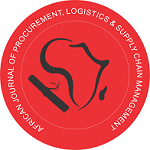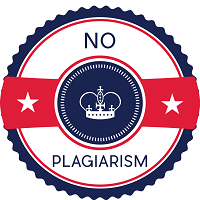| Isaac Kofi Yornu
Abstract Nowadays there are varied and practically endless goods, works and services procured by corporate entities. Some of these include cleaning services, IT systems and equipment, consultancy services, food supplies, real estates, and others. Most of these acquisition decisions are made at the strategic level because of procurement importance to corporate competiveness and attractiveness trend. Due to this, Parikh and Joshi (2005) reveals that organization decision makers are now restructuring their procurement function to achieve optimal operations. Procurement is now a big business and that the government remains the biggest entity that does procurement and disposal on a larger scale in most countries which attracts a countless players and stakeholders (Ondiek & Deya, 2013). The government does procurement from the smallest consumables to multi-million projects to meet the needs of the citizenry. According to Knight et al. (2007), in many economies in the developed world, procurement expenditure from the private sector represents around 40% – 50% in the public sector. Due to its obligations to the citizenry through acquisition of goods, works, and services, it has gain due attention from the media, civil society, donors, researchers, academicians, and other stakeholders. This is because the public constitutes the taxpayers and they are the ones who contribute money to the government for all those acquisitions and therefore need to be served better. There are several benefits connected to the role of procurement activities but there are also challenges that hamper its effectiveness to achieve the intended purpose. Serpins et al (2011) asserts that generation of monetary savings have been the main purpose of public procurement which directly has a great impact on the total costs of public institutions. Knight et al. (2007) assert that ‘even though there are substantial total value associated with public sector purchases, not much research has been undertaken to assess the public procurement systems across nations for improvement. In the report of Public Procurement Authority in 2009, it was stated that the government loses a significant percent of its annual budget through ineffective procurement practices in most government organizations. To what extent does this assertion apply to the current procurement processes in the public sector? Therefore, it is significant for this research to be undertaken to investigate the effectiveness and issues related to public procurement and quality service in the public sector. Keywords: Procurement Systems, Supply Chain Management System |
UPDATES
- Total Quality Management Practices, Organisational Culture and Firm Performance; Service or Product Innovation
- Process and Supplier Capability, Collaboration in New Product Development and Competitive Advantage: The Moderating Effect of Research and Development Capability
- Demand and Supply Characteristics, Supply Chain Strategy and Business Performance
- The Effect of Transactional Costs and Competitive Tendering on Public Procurement Performance
- The Role of Organizational Culture as a Moderating Factor in the Relationship Between E-Procurement Adoption, Procurement Performance, and Value for Money
- The Influence of Corporate Governance on Strategic Procurement and Competitive Advantage
- Senior Management’s Influence on Supplier Selection and Procurement Performance
- Enforcing Ethical Codes of Conduct in Procurement and Its Impact on Public Procurement Performance in Ghana
- The Influence of Supplier Relationship Management on Supply Performance: The Moderating Effect of Employee Commitment
- Transport Cost Minimization and Performance of State-Owned Transport Companies: The Role of Innovative Capability

